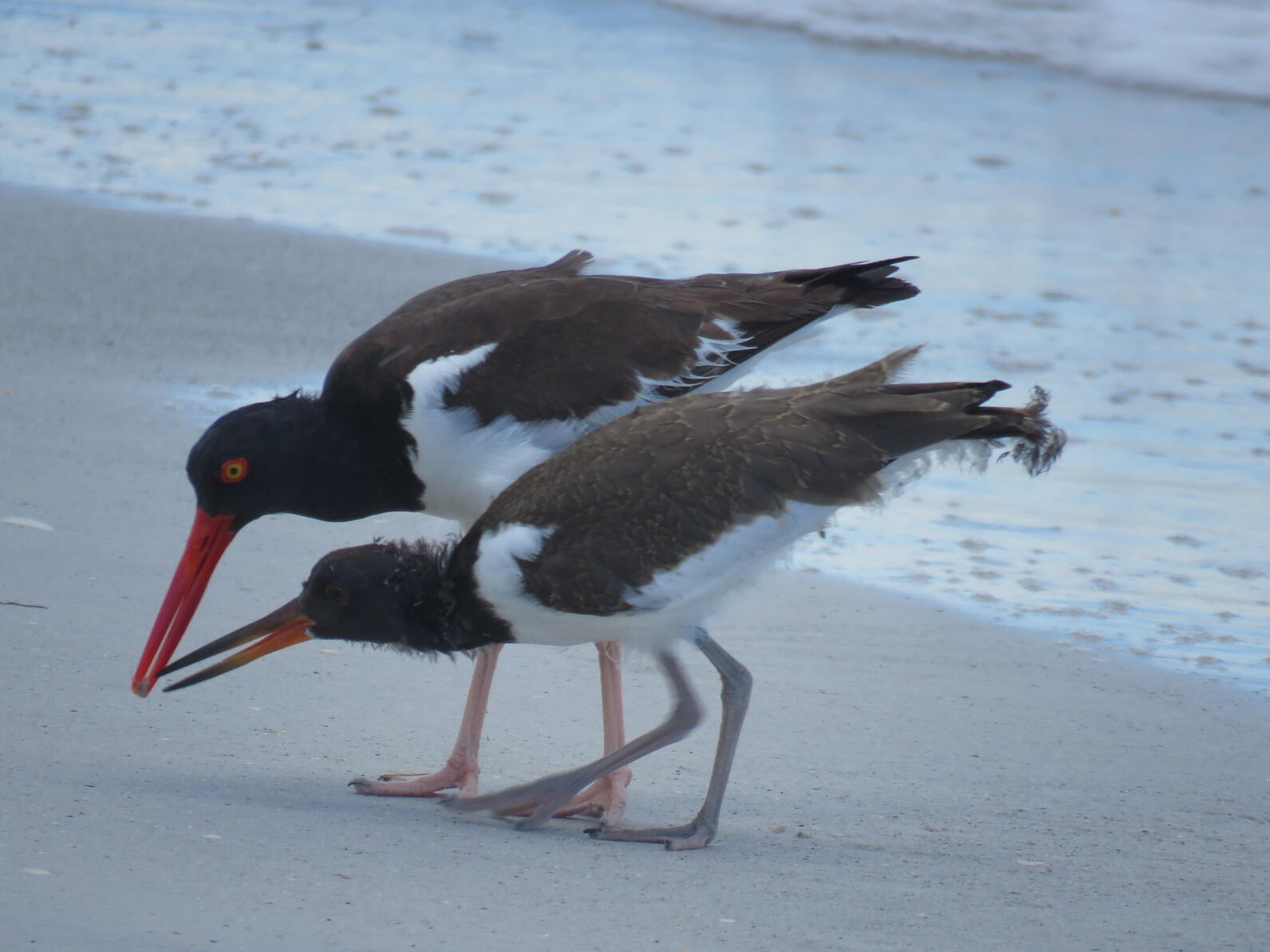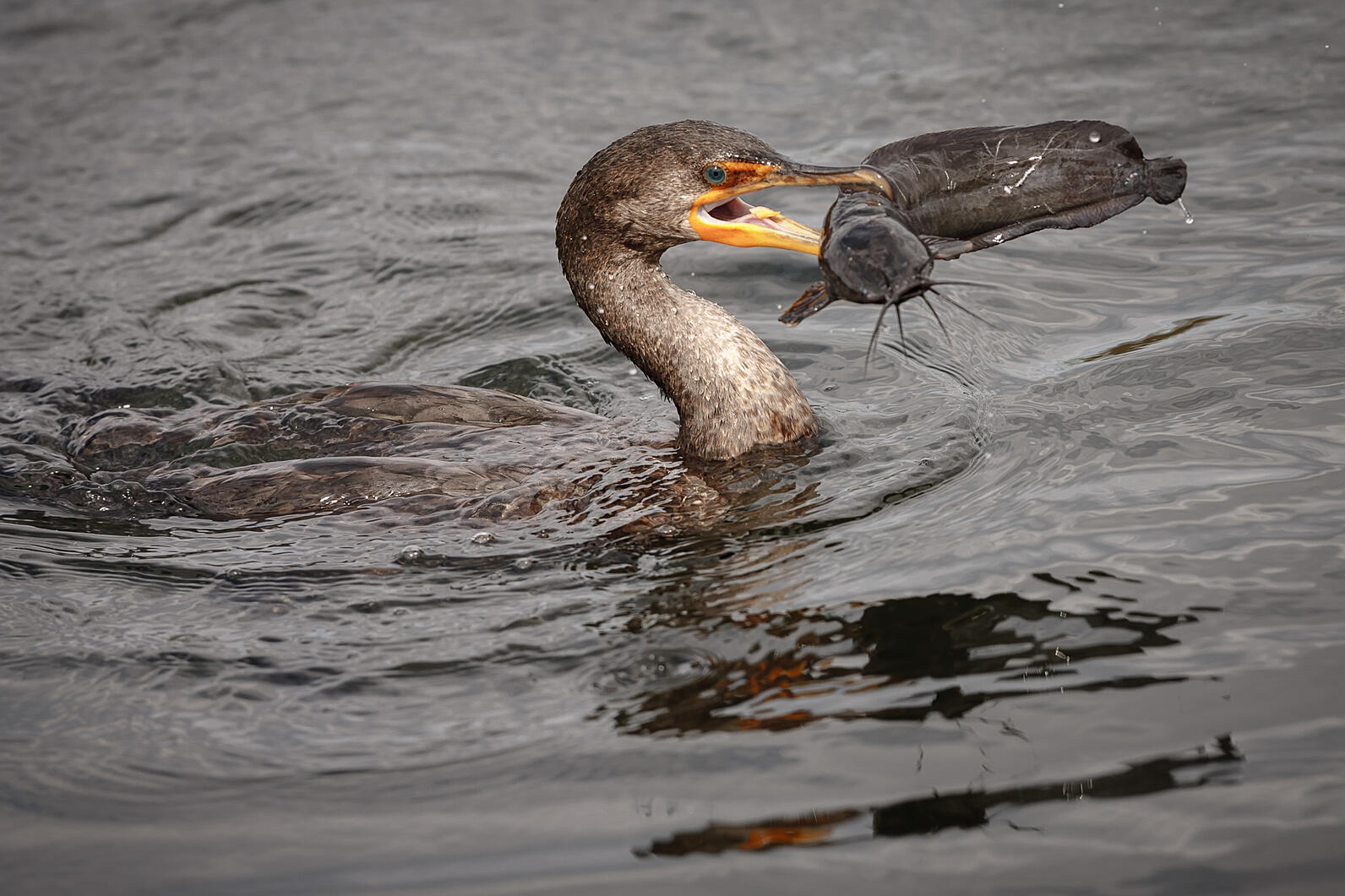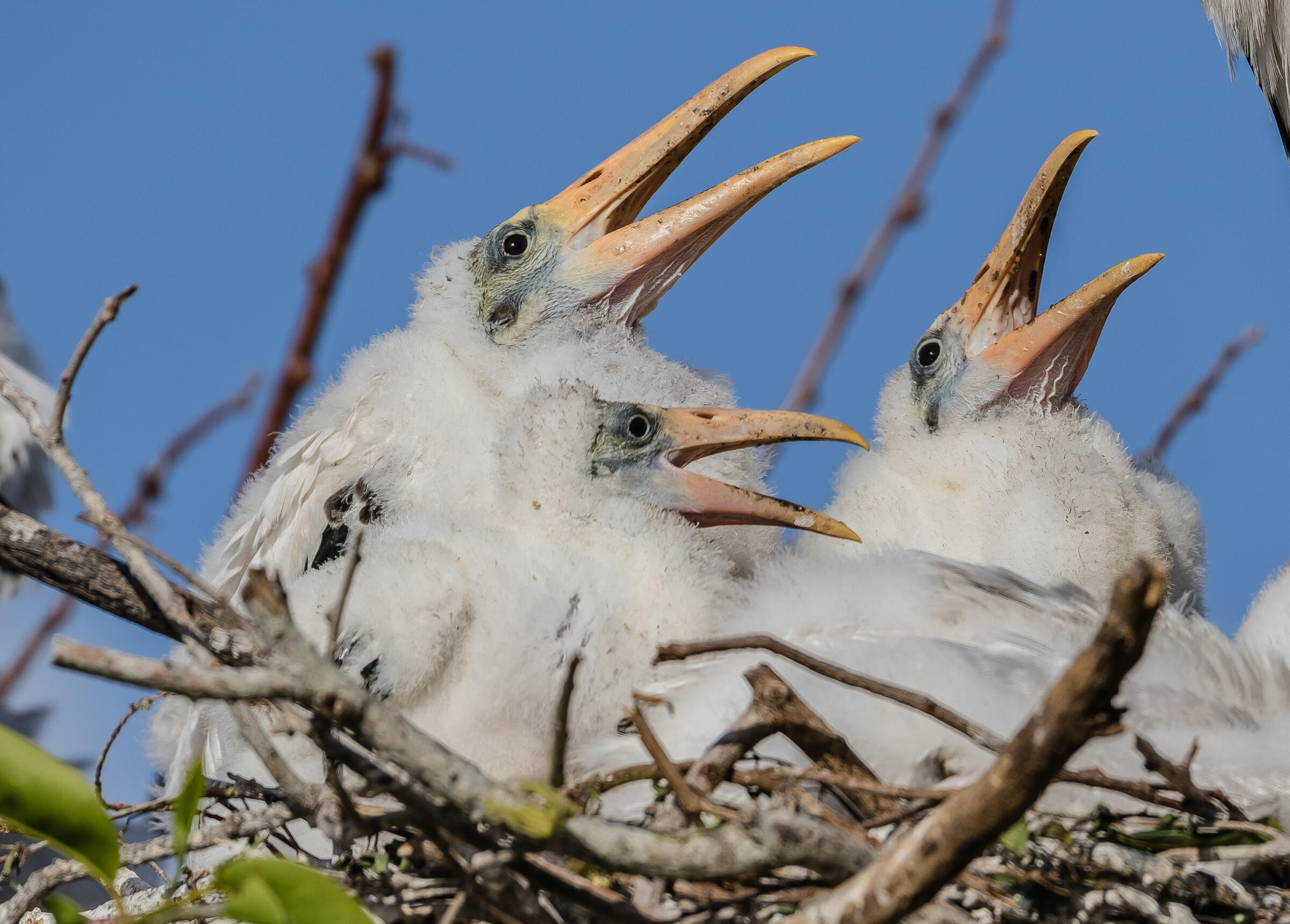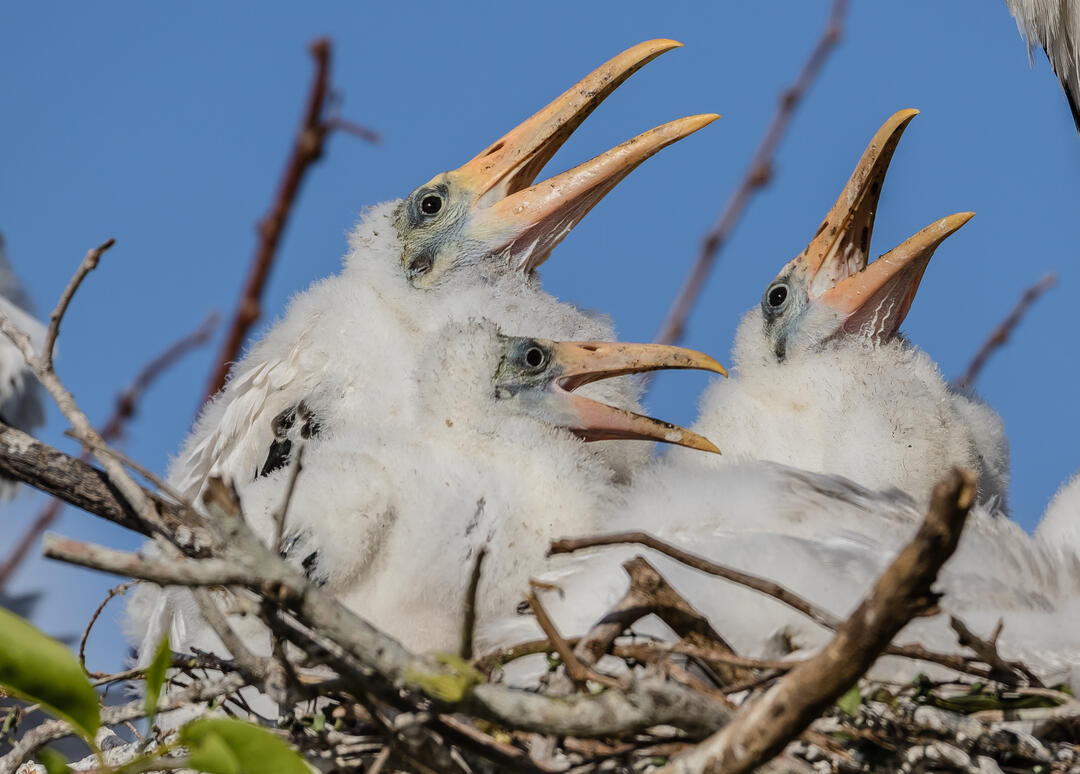by Jeff Liechty, Coastal Biologist
We are in nesting season, a busy time of year to be a bird parent. Chicks demand a lot of high-quality food to develop, and they are vulnerable before they can fly, so rapid growth is important. Their one job is to eat, digest, and grow. Who do they rely on for food? Their parents!
What does feeding look like?
Chicks are on a spectrum from altricial (e.g. songbirds that can barely lift their head at first) to precocial (up and running a few hours after hatching). Shorebirds, waterfowl, and game bird chicks are more precocial, leave the nest shortly after hatching, and largely feed themselves, although their parents still provide care and protection (e.g. the Snowy Plover). Even semi-precocial chicks like Least Terns and Black Skimmers are completely reliant on their parents for food, although they can leave the nest only a couple days after hatching.

How do bird parents bring food back to the nest? Skimmers, terns, and many songbirds only bring back one food item at a time, like a fish or insect, which researchers refer to as "single-prey loading." By contrast, raptors bring back larger prey items and rip them into smaller pieces for the hungry chicks. Alternately, in some species adults return from foraging with food in their crop which they regurgitate for their chicks - think gulls, wading birds, pelicans, and cormorants. Adults will regurgitate partially digested food for the chicks, but in some species chicks will stick their whole head into the parents' mouth!
Chicks beg for food, as this communication method indicates the chicks' hunger and motivates the parent to provide more food. Begging behavior is often very loud, and sometimes includes specific postures, such as crouching or extending their neck with mouths agape. For broods with multiple chicks, this sibling rivalry can be an intense competition with the oldest/strongest chicks getting the bulk of the food. Only when food is abundant enough do the lesser chicks get fed.

What leads to a succesful feeding?
High quality habitat and healthy ecosystems with abundant food are essential for bird parents to be able to feed these insatiable digestive machines. Seabirds and wading birds often fly miles away from their nests to find suitable foraging habitat. In many species both parents cooperate to guard and feed chicks, taking turns foraging and bringing back food to meet the high demand. In fact, studies have shown that many species feed their young different food than the adults themselves consume because chicks require quality food for rapid development. Parents often select size-appropriate, easily consumed prey items that are nutritionally dense when provisioning to chicks.












